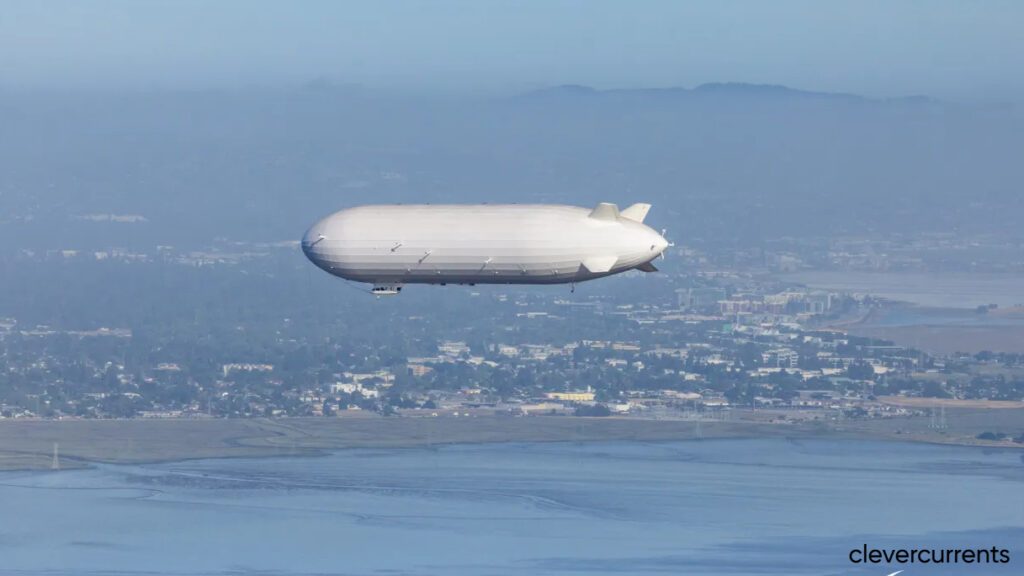What Was Seen
On a recent morning over the San Francisco Bay area, residents were startled by the sight of a massive, stark white craft drifting slowly across the skyline — seemingly unmarked, very large, and unlike a typical airplane or blimp.
Videos streamed across social media showing the object floating above landmarks like the Golden Gate Bridge before turning south along the bay. Many viewers wondered if it was a UFO, a secret craft, or simply a promotional blimp.
The True Identity
The mystery was solved rather quickly: the craft is the “Pathfinder 1” — built by LTA Research & Exploration LLC, a startup backed by Sergey Brin (co-founder of Google LLC).
Here are the key specs and purposes of the craft:
-
Length: ~120 m (about 400 ft) — making it comparable in size (or larger) than historical rigid airships.
-
Propulsion: Electric-driven motors, non-traditional envelope design (rigid internal frame) to reduce carbon footprint.
-
Purpose: It’s a prototype for zero-emission, lighter-than-air aviation aimed at cargo and passenger transport.
-
Status: Undergoing outdoor testing from the base at Moffett Federal Airfield (Mountain View / Bay Area).
Why It’s Big News
Technology & sustainability: The resurgence of airships is significant because they offer the possibility of moving goods (and perhaps people) with far less energy than jets. For example, LTA claims their craft could use only a quarter of the energy of a conventional jet for the same tonne-mile.
Innovation hotspot: The Bay Area is already known for tech-innovation; now it’s becoming a testbed for experimental aviation. The sight of this craft over San Francisco ties together tech, aerospace, and the future of transport.
Public fascination: There’s something inherently dramatic about a giant airship floating overhead — it evokes old-style dirigibles and a future-forward vibe simultaneously. It captured people’s imaginations and social feeds quickly.
What the Sight Means & Implications
-
Visibility: Because it’s large and relatively slow, the Pathfinder is easy to spot from the ground — which means more public interest and a chance for the company to showcase progress (or experience scrutiny).
-
Regulation & airspace: Testing such craft in urban areas raises questions about how air traffic will integrate them, what altitude they will fly, safety issues (especially given past airship accidents like the Hindenburg), and how they’ll deal with wind and weather.
-
Commercial potential & timeline: While promising, airships still face many challenges — speed limitations, weather susceptibility, infrastructure for ground handling, and certification. Pathfinder 1 is a prototype; commercial operation is still to come.
What to Watch For
-
Follow future flight paths: If this craft becomes visible regularly over populated areas, we may see more data on where and how it flies.
-
Commercial announcements: When LTA Research announces clients, cargo contracts, or passenger plans — that will mark a real shift.
-
Technological breakthroughs: For example, improved electric propulsion, better materials, or hybrid configurations to overcome weather/wind constraints.
-
Regulatory shifts: How the Federal Aviation Administration (FAA) and other bodies integrate such craft into existing airspace will define how (and how soon) they go mainstream.
Wrap-Up
What started as a mysterious white object over San Francisco turned out to be a bold piece of aerospace innovation. The Pathfinder 1 is a sign that the “dream” of airships — long relegated to history books and sci-fi — might be making a real‐world comeback, albeit with modern materials, electric drive, and sustainability goals.
For residents of the Bay Area, it was a moment of witnessing something unusual overhead — but also a glimpse into what transport might look like in the future.

